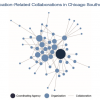Join the Housing Is Working Group to discuss special topics related to cross-sector initiatives and programmatic considerations particularly focused on the intersections of housing, health, and education.
This year’s public webinars cover topics such as child welfare and housing, leveraging Medicaid resources for housing services, out-of-school time, and digital connectivity in a post-ACP world.
View Calendar


